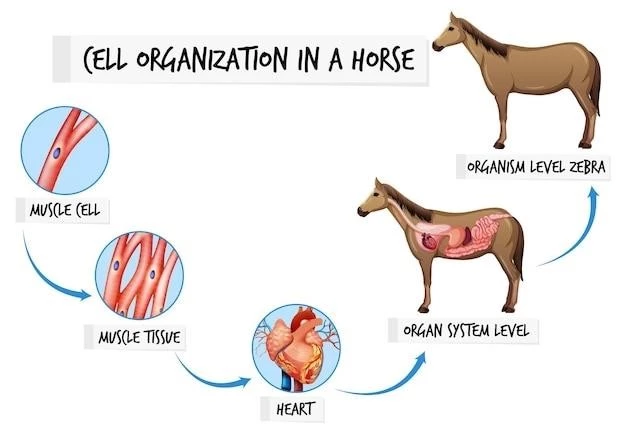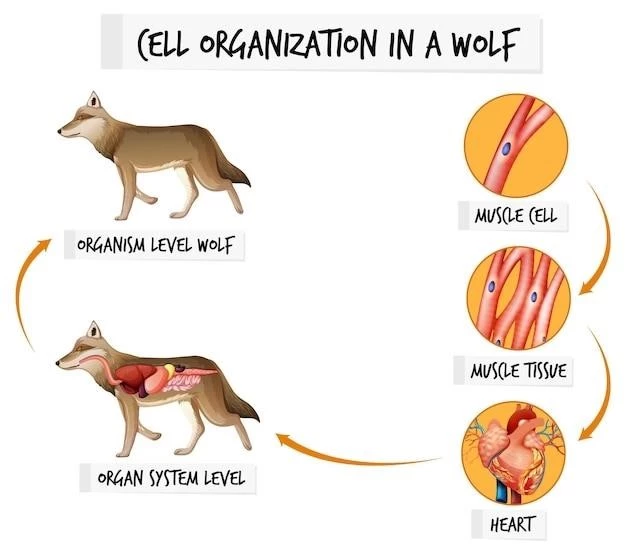Disease ⸺ Hip Luxation
Introduction to Hip Luxation
Hip luxation, also known as a dislocated hip joint, is a condition where the head of the femur moves out of the acetabulum socket. This traumatic injury can result in severe pain and impaired mobility. Understanding the causes, symptoms, and treatment options for hip luxation is crucial in providing effective veterinary care to animals suffering from this condition.
Understanding the Hip Joint
The hip joint is a crucial ball-and-socket joint connecting the femur to the pelvis, allowing for a wide range of motion essential for daily activities in both animals and humans. Its complex anatomy, involving bones, ligaments, tendons, and cartilage, ensures stability and flexibility. The proper function of the hip joint is vital for walking, running, and overall mobility. Any injury or dislocation affecting this joint can lead to significant discomfort and mobility restrictions.
Anatomy of the Hip Joint
The hip joint comprises the acetabulum, a socket in the pelvis, and the femoral head, a ball-shaped structure at the top of the femur. These articulate with articular cartilage, which provides cushioning and smooth movement. Ligaments like the iliofemoral and pubofemoral ligaments offer stability, while tendons such as the iliopsoas help with movement. The synovial membrane produces synovial fluid, reducing friction. This intricate anatomy ensures the hip joint’s functionality and resilience to daily stresses.
Function of the Hip Joint
The hip joint plays a crucial role in weight-bearing, locomotion, and overall stability. It supports the body’s weight during standing and provides mobility for activities like walking, running, and jumping. The range of motion offered by the hip joint enables intricate movements while maintaining stability. Muscles surrounding the hip joint, including the gluteal muscles and hip flexors, facilitate movement and contribute to its strength. The coordination of these structures ensures smooth and efficient functioning of the hip joint in daily activities.
Causes of Hip Luxation
Hip luxation can occur due to various factors, with trauma being a common cause. High-impact injuries or accidents can force the femoral head out of the acetabulum, resulting in dislocation. Fractures involving the hip joint can also lead to luxation as the structural integrity is compromised. Other causes may include congenital abnormalities, hip dysplasia, and certain medical conditions affecting the joint’s stability. Understanding the underlying cause of hip luxation is essential for accurate diagnosis and appropriate treatment to restore the joint’s function.
Trauma as a Common Cause
Trauma is frequently identified as a major cause of hip luxation. High-impact incidents such as vehicular accidents, falls from heights, or blunt force trauma can precipitate the displacement of the femoral head from the acetabulum. The sudden and forceful nature of trauma can lead to ligamentous damage or fractures within the hip joint, disrupting its structural integrity and triggering the dislocation. Prompt recognition of trauma-induced hip luxation is crucial for initiating timely treatment interventions to address the injury and prevent potential complications.
Fracture-Associated Luxation
Fractures related to the hip joint can predispose individuals to hip luxation. When a fracture occurs within the vicinity of the hip joint, it can disrupt the normal alignment and movement of the femoral head within the acetabulum. The compromised structural integrity stemming from the fracture can result in instability and dislocation of the hip joint. Fracture-associated luxation demands comprehensive evaluation and treatment to address both the fracture site and the concurrent hip displacement to restore functionality and minimize long-term complications.
Symptoms and Diagnosis
Recognizing the symptoms and accurately diagnosing hip luxation is pivotal for effective treatment. Common signs include intense pain around the hip joint, lameness, and reluctance to bear weight on the affected limb. Visible deformity and limited range of motion may indicate a dislocated hip. Veterinary evaluation, including physical examination, imaging tests like x-rays, and possibly CT scans, is essential for confirming the diagnosis. Identifying the specific symptoms and conducting a thorough diagnostic process are vital steps in managing hip luxation and devising an appropriate treatment plan.
Pain and Mobility Restrictions
Pain and mobility restrictions are hallmark features of hip luxation. The dislocation of the hip joint typically elicits acute discomfort, manifesting as severe pain localized to the affected area. Animals may exhibit signs of lameness, reluctance to move, and limitations in their normal range of motion due to the injury. The pain can significantly impact the quality of life and mobility of the affected individual. Addressing pain management and mitigating mobility restrictions are essential components of the treatment plan to improve the overall well-being and functional outcomes for animals with hip luxation.
Veterinary Examination for Diagnosis
Accurate diagnosis of hip luxation necessitates a comprehensive veterinary evaluation. A thorough physical examination is crucial to assess symptoms like pain, lameness, and altered gait patterns. Veterinary professionals may utilize diagnostic tools such as x-rays or advanced imaging techniques to visualize the hip joint and confirm the dislocation. Detailed evaluation of the joint’s alignment, potential fractures, and soft tissue damage aids in determining the extent of the injury and guiding treatment decisions. A meticulous veterinary examination is vital in establishing a precise diagnosis and formulating an effective management strategy for hip luxation.
Treatment Options
Addressing hip luxation involves a combination of surgical and rehabilitative measures. Surgery is often necessary to realign the joint, repair damaged ligaments or tendons, and stabilize the hip. Post-surgical rehabilitation, including physical therapy, is essential for restoring strength, flexibility, and function to the affected limb. The rehabilitation process aims to improve mobility, reduce pain, and prevent long-term complications such as arthritis. Customized treatment plans tailored to the individual’s condition and response to therapy play a critical role in achieving successful outcomes for animals with hip luxation.
Surgery for Hip Luxation
Surgical intervention is a primary treatment modality for hip luxation. The procedure aims to reduce the dislocated femoral head and stabilize the hip joint. Surgical techniques may involve realigning the joint, repairing damaged structures, or performing joint reconstruction to restore normal function. Orthopedic surgeons employ precision and expertise to ensure proper alignment and stability post-operatively. Surgery for hip luxation is instrumental in correcting the anatomical derangement, addressing underlying structural issues, and laying the foundation for successful rehabilitation and improved mobility for the affected animal.

Rehabilitation and Physical Therapy
Rehabilitation and physical therapy are integral components of the treatment plan for hip luxation. Following surgery, a structured rehabilitation program focusing on strengthening exercises, range of motion activities, and gait training is crucial for optimizing recovery. Physical therapy aims to enhance muscle function, restore joint mobility, and improve overall limb functionality. Rehabilitation protocols tailored to the individual’s condition, guided by veterinary professionals, facilitate a gradual return to normal activities while minimizing complications. Consistent participation in rehabilitation sessions is essential for maximizing the animal’s postoperative outcomes and promoting long-term joint health.
Complications of Hip Luxation
Hip luxation can lead to various complications, with arthritis development being a common consequence. The altered biomechanics following a dislocation can accelerate joint degeneration, resulting in inflammation, pain, and functional impairment. Long-term mobility restrictions are also prevalent, affecting the animal’s ability to move comfortably and engage in regular activities. Complications arising from hip luxation necessitate vigilant monitoring and proactive management to mitigate progression. Early intervention, appropriate treatment, and consistent follow-up care are essential in addressing complications effectively and ensuring optimal joint health and function in the long run.
Arthritis Development
Arthritis development is a prevalent complication associated with hip luxation. The abnormal joint mechanics resulting from the dislocation can lead to accelerated wear and tear of the cartilage, triggering inflammation and degenerative changes in the hip joint. Arthritis manifests as stiffness, swelling, and pain, impacting the animal’s comfort and mobility. Monitoring for early signs of arthritis post-hip luxation is crucial for implementing interventions to manage symptoms and slow disease progression. Therapeutic strategies aimed at reducing inflammation and preserving joint function can help alleviate discomfort and improve the quality of life for animals predisposed to hip luxation-related arthritis.
Long-Term Mobility Restrictions
Long-term mobility restrictions are common consequences of hip luxation. The dislocation can lead to chronic instability, gait abnormalities, and reduced weight-bearing capacity, affecting the animal’s ability to move freely. Prolonged mobility restrictions can impact the quality of life, limit physical activities, and predispose the joint to secondary complications such as muscle atrophy. Implementing targeted rehabilitation strategies, regular physical therapy, and ongoing monitoring are crucial for managing long-term mobility issues post-hip luxation. By addressing mobility restrictions proactively, veterinarians can help improve the animal’s function and comfort over time.
Importance of Veterinary Care
Access to prompt and comprehensive veterinary care is paramount in managing hip luxation effectively. Veterinarians play a crucial role in diagnosing the condition, determining the underlying cause, and devising individualized treatment plans. Orthopedic surgeons provide surgical expertise for realigning the joint and addressing structural issues post-luxation. Additionally, the guidance of veterinary professionals in coordinating rehabilitation and physical therapy is essential for optimizing recovery and restoring mobility. Collaborative efforts between pet owners and veterinary teams ensure continuity of care, promote positive outcomes, and enhance the overall well-being of animals affected by hip luxation.
Role of Orthopedic Surgeon
Orthopedic surgeons play a vital role in the management of hip luxation, offering specialized expertise in surgical interventions for realigning the dislocated joint and restoring its function. They are adept at performing intricate procedures to repair damaged structures, stabilize the hip, and ensure proper alignment. Through their precise surgical skills and in-depth understanding of musculoskeletal anatomy, orthopedic surgeons strive to enhance the long-term outcomes of hip luxation treatment. Collaborating closely with veterinary teams, these professionals contribute significantly to the comprehensive care and rehabilitation of animals with hip luxation, ultimately improving their quality of life.
Guidelines for Physical Therapy
Physical therapy plays a crucial role in the rehabilitation of animals with hip luxation, focusing on restoring strength, range of motion, and functionality to the affected limb. The orthopedic team prescribes targeted exercises tailored to the individual’s condition, guiding them through a progressive rehabilitation program. Therapeutic interventions aim to improve muscle tone, joint stability, and gait patterns while minimizing pain and discomfort. Adherence to the prescribed physical therapy guidelines, under the supervision of veterinary professionals, is essential for realizing optimal treatment outcomes. Consistent participation in physical therapy sessions enhances recovery, promotes joint health, and enhances the overall well-being of animals recovering from hip luxation.
